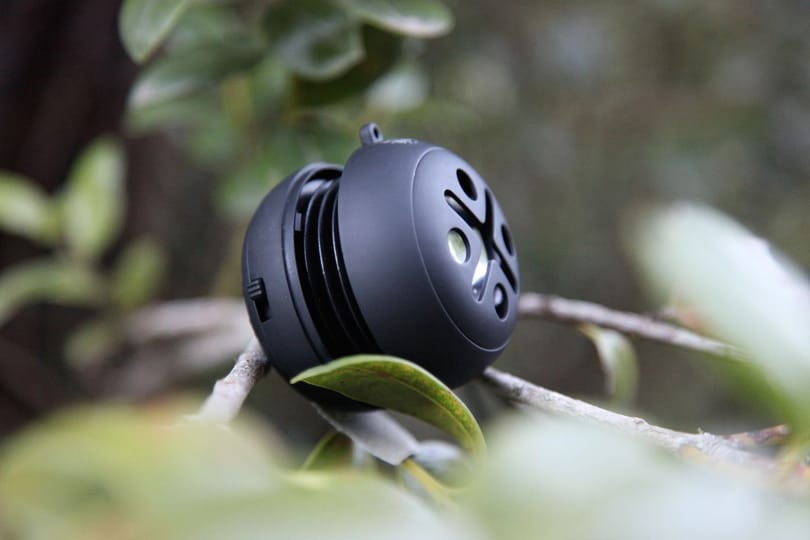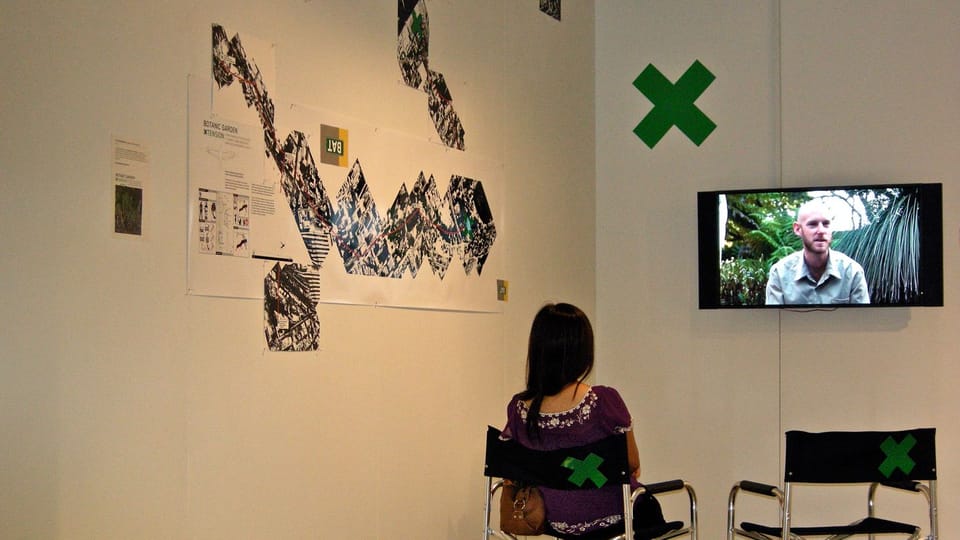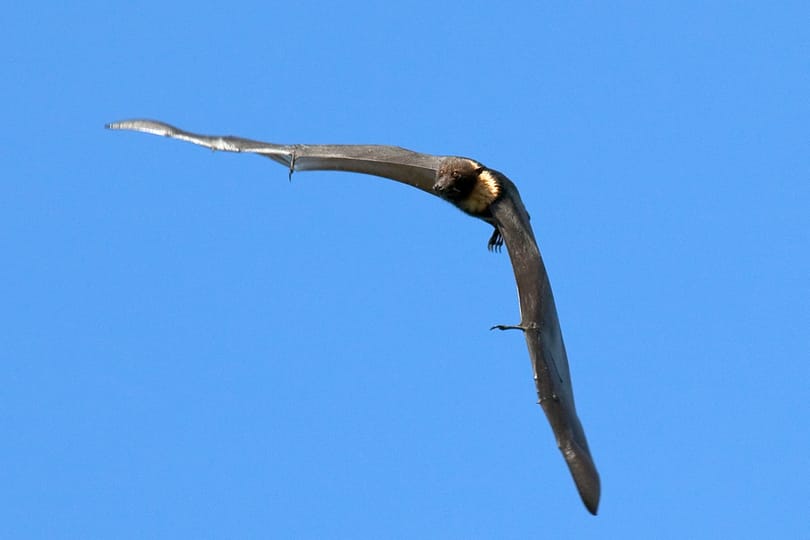Remnant Emergency ArtLab
The 'Remnant Emergency Artlab' was funded by the Australia Council InterArts ArtLab Program in 2010, and involved 22 months of rigorous research and experimentation in several countries. It was developed between a core transdisciplinary team of practicing media artists, designers and engineers where possible working in consultation and collaboration with local creatives at each venue. The team asserted that today’s environmental crisis is underpinned by a deep cultural crisis - and so to get our ‘house in order’ we urgently need to create better and more powerful ‘images’ of what a ‘citizen-led’, sustainable world might be. The ArtLab’s core aim was therefore to begin to understand how to develop and create such ‘powerful images’. Project Development/Theorisation, Led by Tony Fry.
Remnant_Artlab archived website
Video of Key Lab Events
TEAM:
Tony Fry, Intercreate/SCANZ 2011: Eco sapiens, Leah Barclay, Kirsty Boyle, Tega Brain, Ilka Nelson, + (James Muller & Natalie Jeremijenko - for 2010 Sydney events), and many others.
KEY PARTNERS: Australia Council InterArts Office, The Edge, QUT CI, Scanz, UTS/Participatory Design Conference 2010, UTS Research Centres for Contemporary Design Practices and Human-Centred Technology Design, Art Center Nabi (Korea), Artspace Sydney, the UTS Gallery, the Participatory Design Conference (PDC 2010), The Australian Research Council & embodiedmedia and many others.
The REMNANT/EMERGENCY Artlab was awarded an Artlab grant by the Australia Council for the Arts in 2010. It has been assisted by the Australian Government through the Australia Council, its arts funding and advisory body in collaboration with QUT Creative Industries.
FURTHER DETAIL:
The REMNANT/EMERGENCY ArtLab pivoted on a series of five site specific Labs in both Australia and the Australian neighbouring regions of South-East Asia & the Pacific between 2010 and 2012. These labs involved rigorous research and experimentation offering the Artlab Team an opportunity to understand and engage with ideas of remnant self, culture and environments, assisted through an examination of the complexity of cultures and inter-cultural exchange.
LAB 5: Environment/Carnatic Culture R&D tour, Kerala, India, November 2011, in association with Dept Science, Cochin University, India.
Lab 5 Video Documentation
SATELLITE LAB 2: Water Culture Lab, Symposium & Workshop, presented as part of the Floating Land festival, 4-5 June, 2011, 9-5pm, Noosa, Qld, Australia. Archived project website
SATELLITE LAB 1: The Bat-Human Project: A Multidisciplinary Public Performance Event, 29th April, 2011, 5-8pm, Cook and Phillip Park, Sydney, Australia.
Archived project website
The Bat Human Project Documentation
LAB 4: Project Development/Theorisation, Led by Tony Fry.
Archived project website
LAB3/OUTCOME 3: Remnant Breath: A Blindfolded Sound walk, 25th January, 2011, 9pm & 10pm, at Te Henui Walkway, New Plymouth, New Zealand, in collaboration with Leah Barclay, Live environmental sound augmented with micro and studio speakers and live performance over 500m journey, Presented as part of Eco Sapienz Artlab residency, New Zealand, Le Tenui Walkway, New Plymouth, 9 and 10pm. (Included workshops as part of TSB Bank Festival Of Lights, Pukekura Park. New Pymouth, 19-20 Jan, 2011).
Archived project website
Lab 3 Audio Documentation
LAB 2/OUTCOME 2: Botanical Gardens X-Tension: Two Week Residency, and Exhibition of Film, Opening Tuesday 30th, 6-8pm, Nov. Exhibition runs 1st-10th December Artist talk 5-6pm: UTS Gallery - Level 4 courtyard, 702 Harris St, Ultimo, Sydney, Australia
Archived project website www.xtension.cc
LAB 2 Video Documentation
Outcomes were later presented for the PDC 2010 Conference in 'Take Part: Participatory methods in art and design covered by Lizzie Muller and Lian Loke, University of Technology, Sydney with: Keith Armstrong, Queensland University of Technology, Natalie Jeremijenko, New York University, Danielle Wilde, Tokyo University. Kristina Andersen, STEIM, Amsterdam (program pdf), a research discussion for artists and designers involved in participatory Nov 30th 2010.
Outcomes were also exhibited in ‘DIY Urbanism – Sydney Reconsidered’, curated by Joni Taylor for The Right to the City Exhibition, Tin Sheds Gallery, Sydney, April 7-30th, 2011. Archived project website
LAB 1/OUTCOME 1: The Urmadic City, Led by Tony Fry, August 2010.
Archived project website
One key idea invoked was realised in the two Bat-Human focussed events. The project firstly lays out an seemingly intractable problem of managing flying foxes in a big city like Sydney. In Australia flying foxes are yet another threatened species - and yet one which is ecologically essential because of their critical pollination and seed spreading services. These flying foxes (predominantly the grey headed species) congregate in large numbers to sleep during the day in the Sydney Botanical Gardens. Through the inadvertent mechanical damage caused by large numbers of foxes, they are damaging the heritage trees there.
The video created from the research suggests that, instead of the current solution which is to remove them all using industrial noise, that the idea/concept of what a Botanical Gardens should be extended - removing the separations between current institutions and acknowledging the immense ecological services the gardens provide beyond the conservation of plants.
Our provocative idea is to extend the gardens throughout the city - and to focus key developments in areas adjacent to the gardens - in this case a harbour front site called 'Barangaroo' - South of the Sydney Harbour Bridge - a current a hot topic of conversation in Sydney. What is envisaged there at the site is the development of a new ecological park - in essence an Xtension of the idea of a botanical gardens into one one that actively attracts the flying fox colony to it - by creating favourable conditions for the bats through a mix of vegetation and temporary perching/hanging structures. This was presented in the spoof website, called the Barangaroo Xtension (Since removed). By welcoming them as the extraordinary ecological and tourist asset that they are - the bat migration nightly from Barangaroo becomes one of Sydney's most important and cherished tourist attractions.
The video was shot and edited by filmmaker James Muller and features the input of the entire Sydney team: Natalie Jeremijenko, James Muller, Keith Armstrong, Leah Barclay, Tega Brain, Kirsty Boyle and Ilka Nelson.
We collaborated in Sydney with UTS academics Dr. Lian Loke and Dr. Lizzie Muller aided by Holly Williams and Tania Creighton of UTS Gallery - where this work is on show till December 10th 2010. Other experts and participants who have contributed to this film and vision have included: leading Bat Ecologists Peggy Eby and Kerryn Parry Jones, Professor Deborah Rose (Macquarie Uni), Zoo Architect David Hancocks, John Lennis, John Martin (Royal Botanical Gardens Trust), Architects Tom Rivard and Allison Earl, Nancy Pallin, Joni Taylor, Sarah Waterson (UWS), Caitlin McGee & Tania Leimbach (UTS Institute of Sustainable Futures).








